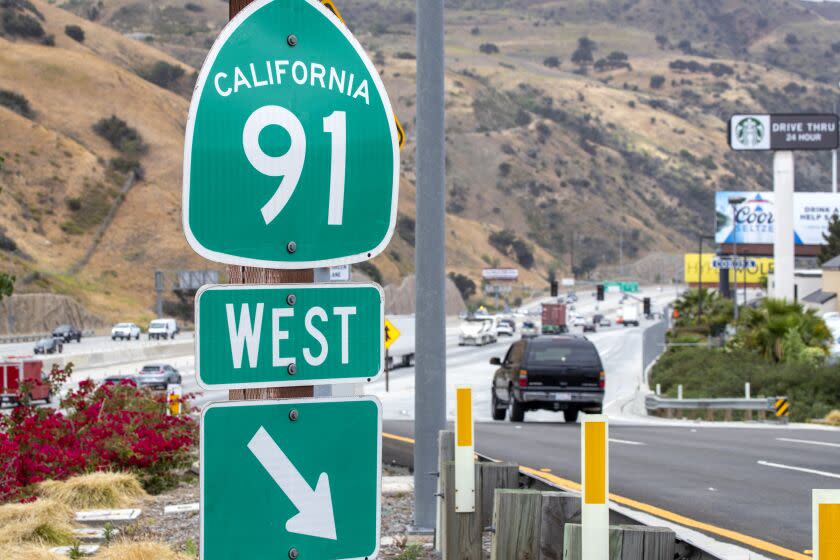Parents of Corona man sue Uber, allege driver left him on the side of freeway where he was killed

The parents of a 21-year-old man who was struck and killed while walking on the 91 Freeway have filed suit against an Uber driver and the ride-hailing company, alleging that their son was abandoned on the side of the freeway.
Cory Robert Hunter of Corona was struck and killed in the early morning hours of May 21 when, according to court records, he was seen walking in the fast lane of the freeway near the Serfas Club Drive exit in Corona.
In the lawsuit, Hunter's parents accuse Uber and the driver of negligence and wrongful death.
A spokesperson for Uber said the company could not comment on pending litigation.
According to the suit filed July 3, Hunter and five friends were picked up from Fullerton about 2:30 a.m. on May 21 and headed to Corona.
Theida Salazar, an attorney representing the Uber driver, Muruli Ntamba, said all of the passengers in his van were "exhibiting behavior that they were intoxicated."
Hunter had fallen asleep during the drive, but was awakened by other passengers when one of the other passengers sitting behind him became ill and had to vomit.
The suit says Ntamba pulled over on the eastbound side of the freeway, and Hunter and the other passengers got out of the vehicle.
"After exiting the vehicle in a disoriented state, Mr. Hunter did not return to the vehicle," according to the suit. Ntamba, instead of looking for him, "left the scene without Mr. Hunter, essentially leaving a completely disoriented individual on the side of a busy highway, knowingly endangering the person of Mr. Hunter," the lawsuit says.
But Salazar said his client was the first one to notice Hunter was missing. Ntamba had been tending to the rider who became sick and offering him water, he said. When everyone was getting back in the van, Ntamba did a head count and noticed someone was missing, Salazar said.
"He looked for Mr. Hunter not once, but looked for him twice," Salazar said.
Salazar said Hunter's friends then told the driver that Hunter would turn up.
After looking for him unsuccessfully, the group got into the van and drove away, but Salazar said Ntamba felt "uneasy" about leaving.
"He thought, 'This isn't right,' so he exits the freeway, and gets back on the opposite direction, so he can get back and do another search," Salazar said.
Salazar said the group searched for Hunter in the area for about 20 minutes in all before going on to their destination.
But the family's attorney, Peter Corrales, said the driver didn't take enough steps to locate Hunter, pointing out there was a 30-foot wall next to the vehicle, meaning there was no place for Hunter to go, other than down the freeway.
"The only sober person at the scene, that we know of, was the driver, and he didn't take enough steps to makes sure that Mr. Hunter was back in the vehicle," Corrales said.
About 2:55 a.m. that morning, Hunter was walking in the fast lane of the freeway when he was hit by a woman driving a 2016 Toyota, according to the suit.
The incident has left Ntamba "distraught and shaken up," Salazar said.
"He was very troubled by this," he said. "It isn't something that is easy for him to deal with."
Hunter's parents have also named the driver of the Toyota, Lauren Pena, as a defendant in the lawsuit, alleging that she "acted in an unreasonable manner at an unsafe speed and failed to see, anticipate, yield to, and avoid striking Mr. Hunter."
City News Service reported that the driver immediately stopped after striking Hunter.
Hunter was hit by a second car shortly after being struck initially.
Sign up for Essential California, your daily guide to news, views and life in the Golden State.
This story originally appeared in Los Angeles Times.
